Often the artistic development of a people is linear with each new generation adding their own ideas onto the ideas of previous generations. This allows for the steady advancement of art into new eras and in the minds of those who enjoy art creates a connection with their past.
The three perfections in Traditional Chinese art
Chinese art has always unified three elements: calligraphy, poetry and painting. This demands a different set of skills and aptitudes from the artist than in the Western tradition. To many Western observers the idea of unifying poetry and painting is an intriguing one.
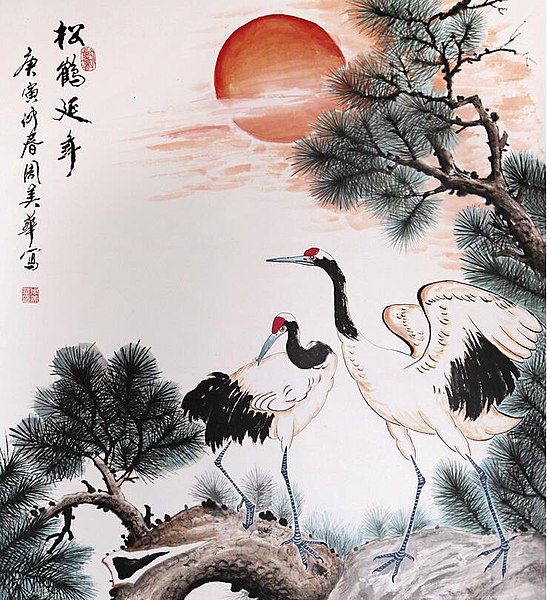
Traditional Chinese art
It is fair to say that Chinese artists have had some rough times. After the communist revolution art was expected to be in the Soviet Socialist Realism style and to follow Communist Party ideology.
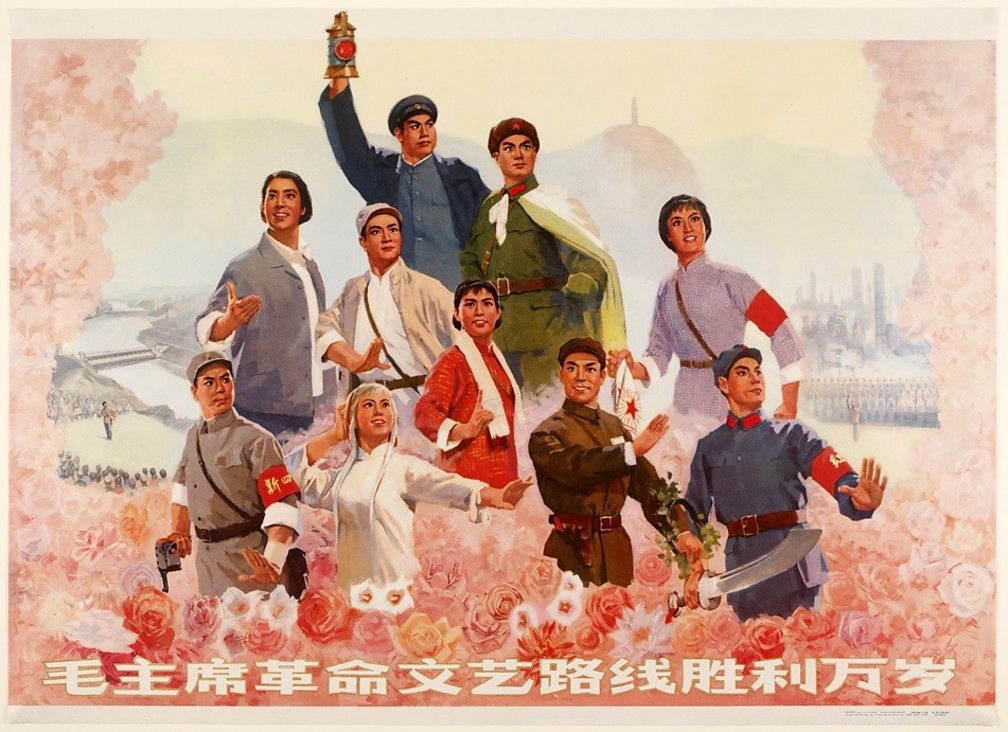
Chinese art from the Maoist period
During the brief period known as the Hundred Flowers Campaign of 1956 - 1957 citizens were encouraged to express their views and this led to a flowering of independent art which although not completely free, did allow for the depiction of everyday life in a way not mandated by socialist realism.
Cultural Revolution (1966-1976)
During Mao's Cultural Revolution things changed drastically - traditional artists were shamed or imprisoned and their work was destroyed by the infamous and fanatical Red Guards. Art schools were closed and artist organisations dissolved. Thousands of people were murdered, so art was the least of many people's worries.
With the death of Mao and the ascendancy of Deng Xiaoping political, economic and cultural life was relatively liberalised. By the 1980s young Chinese artists had begun to experiment with the type of expressionistic and individualistic modern art which had become dominant in the non-communist world.
Artists such as Tiancheng Xie developed new approaches to traditional Chinese brushwork. Shaoqiang Chen returned to traditional themes including poetry painted in watercolour on rice paper.
Some artists mixed socialist realism icons with more modern figurative painting. Indeed it has been noted that figurative themes dominate contemporary Chinese painting. It seems that for now Chinese art tends to feature one third references to the country's recent past as dominated by the Communist Party, one third Western influences and one third traditional Chinese influences. This, everyone agrees, is a very interesting mix.
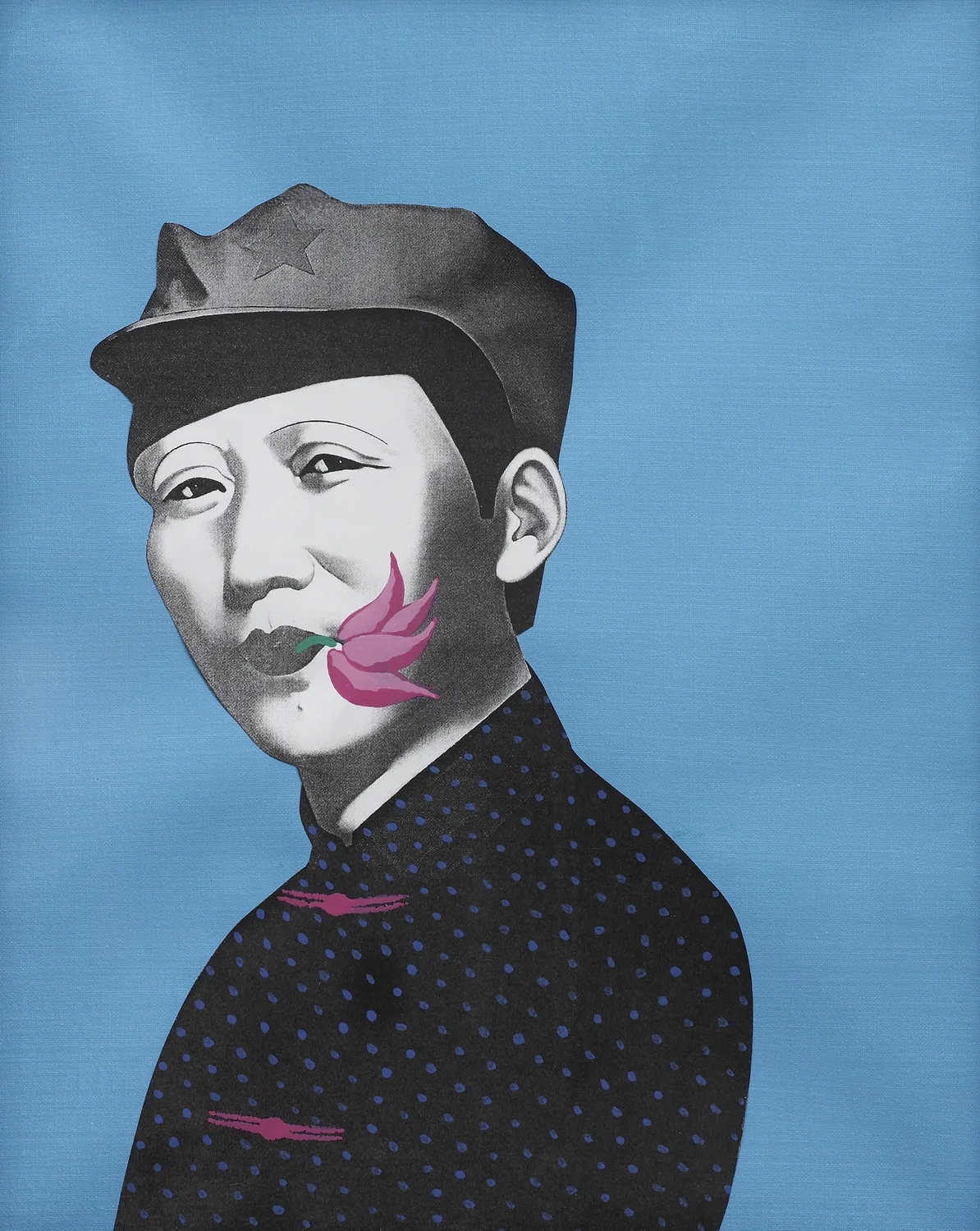
Exhibition of contemporary Chinese art
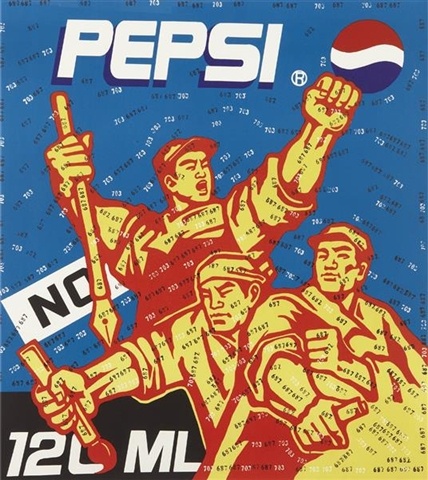
Wang Guangyi, The Great Criticism-Parker, oil on canvas, 1997
Wang Guangyi's oil painting 'The Great Criticism-Parker' is a fine example of the mixing of styles in Chinese contemporary art. Here we see the style of socialist realism mixed with pop art style expressions and brand names.
It is obvious that the cropped compositions and bright colours of pop art have hugely influenced Chinese artists as the country heads towards it own interpretation of consumerism. There is of course a huge irony there. There are also by Chinese artists many portraits which resemble the style of Andy Warhol.
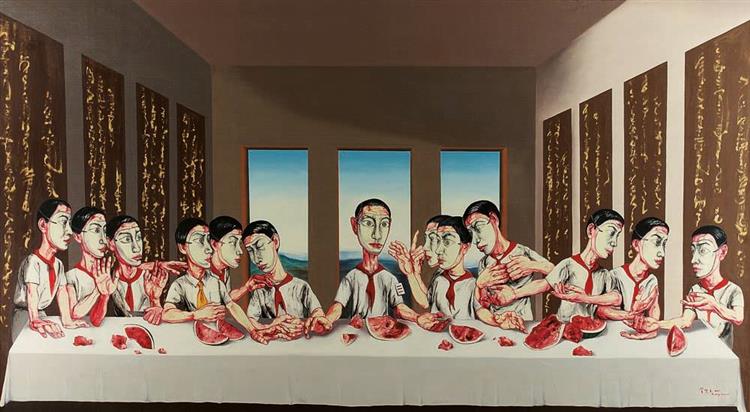
Zeng Fanzhi's The Last Supper sold for a record $23 million in Hong Kong. Picture courtesy CNN.
In 2013 Zeng Fanzhi's 'The Last Supper' was bought by Swiss collectors. This work features the Western influence of Last Supper paintings with a mention of Chinese communism in the clothes worn. In many ways it is typical of twenty first century Chinese art.
Chinese art looks to be heading in an interesting direction and when it has fully absorbed and maybe tired of the influence of Western art, the current rapid development of Chinese society and economy might create something which in turn influences Western art itself.